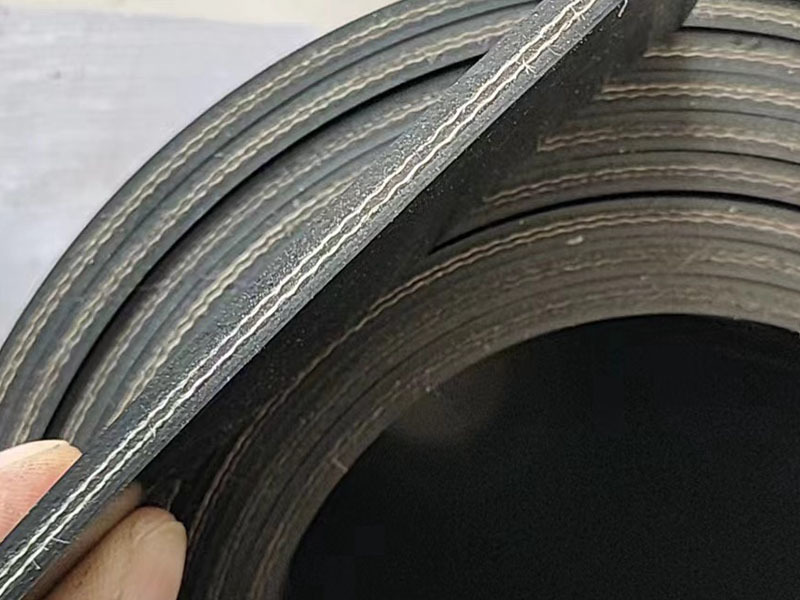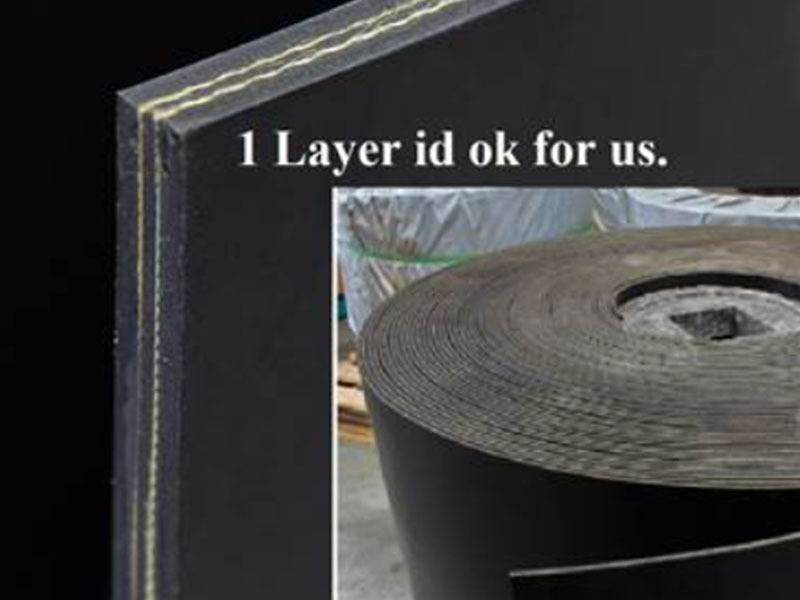Products
Contact Information
Address: China (Boye) conveyor belt Industrial zone
Telephone:+86 18395653111
Mailbox:colin@bestbelting.com
Rubber plate/block/pad (special rubber plate for recycling bed)
Keyword:
Rubber plate/block/pad (special rubber plate for recycling bed)
1. classification
Rubber sheets can be classified according to different standards, such as use, composition, hardness, surface treatment, etc.
Classification by use
Insulating rubber sheet: mainly used for electronic and electrical insulation, with high insulation performance and good electrical performance, which can effectively prevent leakage and short circuit. In addition, the insulating rubber sheet also has the characteristics of high temperature resistance, aging resistance, and oil resistance.
Sealing rubber plate: mainly used in various sealing occasions, such as garages, warehouses, cabins, etc. It has good resilience, insulation, water resistance and plasticity, which can effectively prevent leakage and dust from entering.
Buffer rubber plate: mainly used to reduce the impact and vibration, such as in cars, trains, aircraft and other vehicles as a shock absorption material. The buffer rubber plate is usually made of high elastic material, which can effectively absorb impact energy.
Non-slip rubber sheet: mainly used for anti-slip on the ground, with high friction coefficient and good wear resistance, which can effectively prevent slipping and falling.
Classification by composition
Natural rubber sheet: It is made of natural rubber as the main raw material, has good elasticity and insulation properties, and is suitable for various sealing and buffering occasions.
Synthetic rubber sheet: made of synthetic rubber material, with better high temperature resistance, oil resistance and aging resistance, suitable for more demanding working environment.
Classification by hardness
Hard rubber plate: high hardness, good insulation performance and sealing performance, suitable for all kinds of sealing and insulation occasions.
Soft rubber sheet: lower hardness, better cushioning performance and anti-skid performance, suitable for various shock absorption and anti-skid occasions.
Classification by surface treatment
Ordinary rubber sheet: rubber sheet with untreated surface, suitable for general occasions.
Anti-slip rubber sheet: The rubber sheet with anti-slip treatment on the surface can increase the coefficient of friction and is suitable for occasions that require anti-slip.
Oil-resistant rubber plate: the surface of the rubber plate after oil-resistant treatment, can increase the resistance to oil substances, suitable for the presence of oil.
Acid and alkali resistant rubber plate: the surface of the rubber plate after acid and alkali treatment, can increase the resistance to acid and alkali, suitable for the presence of acid and alkali.
Classification by thickness
Thin rubber sheet: the thickness is thin, usually less than 1mm, suitable for occasions that require light and thin materials.
Medium-thick rubber sheet: moderate thickness, usually between 1mm and 5mm, suitable for general purpose occasions.
Thick rubber plate: thick, usually more than 5mm, suitable for occasions that require thicker materials, such as for the manufacture of tires.
2. characteristics
Rubber sheet has a variety of characteristics, including high hardness, general physical and mechanical properties, non-toxic and tasteless, good elasticity, wear resistance, corrosion resistance, high temperature resistance, etc. These characteristics make the rubber sheet has a wide range of applications in many fields.
3. uses
Rubber sheet has a wide range of uses due to its excellent properties, including but not limited:
Sealing material: used for processing various sealing gaskets, sealing rings and other products.
Protective materials: used for the protection of a variety of corrosive media, such as in the chemical, food manufacturing, pharmaceutical and other industries, used to store, transport a variety of corrosive liquids, gases and solid materials container manufacturing.
Electrical insulation materials: used for the insulation of various electrical equipment in the power, electronics, and communications industries.
Sound insulation materials: used for sound insulation in construction, decoration and road traffic, such as floors, walls, ceilings, soundproof doors, soundproof windows, soundproof walls on elevated roads, etc.
Damping material: used for earthquake damping and noise reduction of buildings.
Daily supplies: used in the manufacture of toys, mats, etc.
Other industrial uses: used in plastic processing, casting, footwear, clothing and other industries.
4. production process
The production process of rubber sheet includes rubber mixing, rubber molding, rubber vulcanization, surface treatment, inspection and quality control, packaging and storage. These steps together ensure the quality and performance of the rubber sheet.
Rubber mixing: the rubber raw materials are crushed, sieved, weighed and other processes, mixed with a variety of auxiliary agents such as vulcanizing agent, accelerator, antioxidant, etc., and mixed by mixing machinery (such as rubber mill). The purpose of mixing is to make the rubber and various auxiliary agents fully dispersed evenly, increase the rubber processability and physical and mechanical properties.
Rubber molding: the mixed rubber material is sent to the rubber calender, rubber extruder and other equipment for the molding of the rubber plate. These devices usually use heat and pressure to flow the rubber material in the mold, fill it, and maintain the desired shape and size during subsequent cooling and vulcanization.
Rubber vulcanization: The molded rubber sheet needs to be vulcanized to make the rubber substance cross-linked and improve the mechanical strength and wear resistance of the rubber. Vulcanization is usually carried out using high temperature (about 150-180°C) and a vulcanizing agent (such as sodium sulfide), and the time and temperature need to be determined according to the type and thickness of the rubber material.
Surface treatment: after vulcanization of the rubber plate by removing the surface roughness, cleaning, finishing and other processes, in order to improve the appearance quality and surface smoothness of the rubber plate.
Testing and quality control: testing the finished rubber sheet, such as checking the physical and mechanical properties such as size, hardness, tensile strength, wear resistance, etc., and evaluating and judging the product quality according to relevant standards.
Packaging and storage: Qualified rubber sheets are packaged, such as packaged with plastic film, for easy protection and storage.






FAQ
Characteristics of Polyester Conveyor Belt
High modulus, low elongation, good heat stability, impact resistance and other characteristics, suitable for medium and long distance, high-speed, high-speed conditions of conveying materials.
Body material for heat-resistant conveyor belts
The subject material of the heat-resistant conveyor belt includes a skeleton material, a covering layer and a base material.
Selection of the diameter of the conveying roller
The selection of roller diameter should consider the following factors: the average specific pressure between the conveyor belt and the roller surface, the amount of deformation of the bag and the bag, the utilization rate of the allowable strength of the conveyor belt, the frequency of bending of the conveyor belt, the installation location of the conveyor and the conditions of use.
Main material of nylon conveyor belt
The main material of the nylon conveyor belt is nylon, but it does not have enough tension, so it is necessary to add a layer of industrial polyester cloth between nylon and nylon to increase the tension when making the finished product.
The advantages of the pattern conveyor belt
The pattern conveyor belt can ensure the smooth transportation of materials, with anti-skid, impact resistance, and high temperature resistance.
Related Products
Product inquiry
To: Baoding Fangnuo Rubber Products Manufacturing Co., Ltd.













